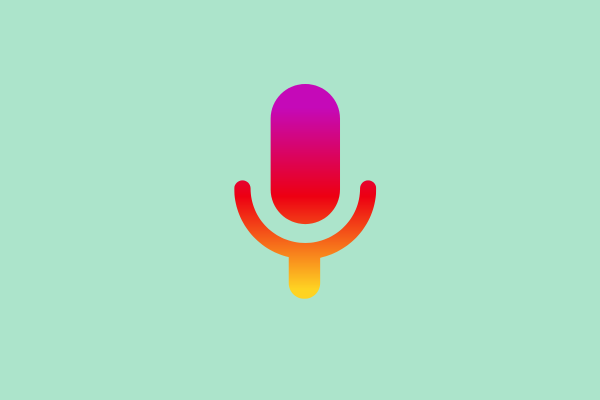Google Voice Assistant, commonly referred to as Google Assistant, is a powerful virtual assistant developed by Google. It uses artificial intelligence (AI) and natural language processing (NLP) to understand and respond to user queries, perform tasks, and provide information. Google Assistant is integrated across various devices and platforms, offering a seamless, voice-activated experience. Here’s a comprehensive guide on Google Assistant, covering its setup, features, and functionalities.
What is Google Assistant?
Google Assistant is an AI-powered virtual assistant that helps users interact with their devices using voice commands. It is designed to assist with a wide range of tasks, including answering questions, controlling smart home devices, setting reminders, and providing real-time information. Google Assistant is available on various devices, such as smartphones, smart speakers, tablets, and smart displays.
Key Features of Google Assistant
Voice Recognition:
Google Assistant uses advanced voice recognition technology to understand and process spoken commands. It can recognize different accents and speech patterns, making it versatile and accessible to a global audience.
Natural Language Processing:
The assistant employs natural language processing to interpret user queries and provide relevant responses. This allows for more conversational interactions, where users can ask complex questions or issue multi-step commands.
Personalized Responses:
Google Assistant can provide personalized responses based on user preferences and past interactions. It learns from user behavior to offer more relevant information and recommendations.
Smart Home Integration:
Google Assistant integrates with a wide range of smart home devices, allowing users to control lights, thermostats, security cameras, and more using voice commands. It supports devices from various manufacturers, making it a versatile choice for smart home automation.
Task Management:
The assistant can manage tasks such as setting reminders, alarms, and calendar events. Users can ask Google Assistant to remind them of specific tasks at certain times or locations, helping with organization and productivity.
Information and Entertainment:
Google Assistant provides access to a vast amount of information, including weather updates, news, sports scores, and trivia. It can also play music, podcasts, and audiobooks, and provide recommendations based on user preferences.
Language Support:
Google Assistant supports multiple languages, making it accessible to users around the world. It can switch between languages seamlessly, allowing for multilingual interactions.

Step-by-Step Guide to Using Google Assistant
On Android Devices:
Google Assistant is typically pre-installed on Android devices. To activate it, press and hold the Home button or say “Hey Google” or “Ok Google” if voice activation is enabled. If it’s not set up, you may need to download the Google Assistant app from the Google Play Store.
On iOS Devices:
Download the Google Assistant app from the Apple App Store. Open the app and sign in with your Google account. Follow the on-screen instructions to set up the assistant.
Configuring Google Assistant:
Personalization:
Customize Google Assistant by setting up your preferences, such as your home address, preferred news sources, and daily routines. This helps the assistant provide more relevant information and recommendations.
Voice Match:
Enable Voice Match to allow Google Assistant to recognize and respond to your voice. This feature helps personalize responses and provides a secure way to access your personal information.
Using Voice Commands:
Asking Questions:
You can ask Google Assistant a wide range of questions, such as “What’s the weather today?” or “Who won the latest football match?” Simply activate the assistant and answer your query.
Managing Tasks:
Use Google Assistant to set reminders, alarms, and calendar events. For example, say “Remind me to call John at 3 PM” or “Set an alarm for 6 AM.”
Controlling Smart Home Devices:
Device Setup:
To control smart home devices, ensure they are compatible with Google Assistant and properly set up through their respective apps. Link these devices to Google Assistant through the Google Home app or the device’s settings.
Voice Commands:
Once linked, you can use voice commands to control your smart home devices. For example, say “Turn off the living room lights” or “Set the thermostat to 72 degrees.”
Managing Communication:
Making Calls and Sending Messages:
Google Assistant can make phone calls and send messages on your behalf. Say “Call Mom” or “Send a text to Alex saying I’m on my way” to perform these actions.
Checking Notifications:
You can ask Google Assistant to read your notifications, such as “What’s my next calendar event?” or “Do I have any new emails?”
Exploring Entertainment Options:
Playing Media:
Ask Google Assistant to play music, podcasts, or audiobooks. You can say “Play jazz music” or “Play the latest episode of my favorite podcast.”
Providing Recommendations:
Google Assistant can recommend movies, restaurants, and other services based on your preferences. For instance, say “What’s a good restaurant nearby?” or “What movie should I watch tonight?”
Using Multilingual Capabilities:
Language Switching:
Google Assistant supports multiple languages and can switch between them as needed. You can set up your preferred languages in the assistant’s settings and ask questions or issue commands in those languages.
Privacy and Security:
Managing Data:
Google Assistant stores voice interactions to improve its performance. You can manage and delete these interactions through your Google account settings to ensure your privacy.
Voice Match and Security:
Enable Voice Match to secure your information and ensure that only authorized users can access personalized features and data.
Advantages of Google Assistant
Google Assistant provides hands-free operation, making it easy to perform tasks and access information while multitasking.
Integration:
The assistant integrates with a wide range of services and devices, enhancing its functionality and allowing for seamless control of various aspects of daily life.
Personalization:
Google Assistant offers personalized responses and recommendations based on user preferences and past interactions, improving the relevance and usefulness of its features.
Accessibility:
With support for multiple languages and voice recognition, Google Assistant is accessible to a broad audience, including users with different language preferences and accents.
Limitations and Considerations
Privacy Concerns:
Users should be aware of privacy implications, as Google Assistant records and stores voice interactions. Managing and reviewing these settings can help maintain privacy.
Dependency on Internet Connection:
Google Assistant requires an internet connection to function. Users without reliable internet access may experience limitations in using the service.
Device Compatibility:
While Google Assistant integrates with many devices, there may be compatibility issues with some smart home devices or services.
Conclusion
Google Assistant is a versatile and intelligent virtual assistant that enhances communication, task management, and smart home control through voice commands. By understanding its features, setup process, and usage, users can effectively leverage Google Assistant to streamline their daily activities and improve their overall productivity. Whether on a smartphone, smart speaker, or other devices, Google Assistant offers a seamless and personalized experience that integrates with the broader Google ecosystem.


